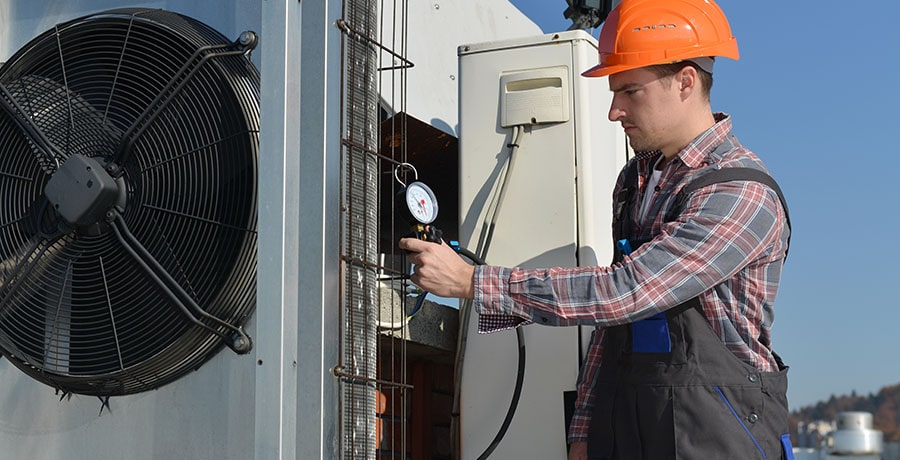Opening a new venture in the home comfort industry often starts with mastering essential services such as AC repair services, which lay the foundation for a thriving business. Aspiring entrepreneurs must balance technical know how with savvy business practices to stand out in a crowded market. Understanding customer needs and local climate trends guides decisions about service offerings and pricing models. Building trust early through transparent communication and professional conduct establishes a reputation that feeds steady referrals. A proactive attitude toward troubleshooting and preventative maintenance reveals a deep entrepreneurs spirit that resonates with clients seeking reliable, long lasting comfort solutions.
Assessing Market Demand
Before launching your HVAC repair service, it is vital to conduct thorough research on local market conditions and seasonal demands. Investigating factors such as average summer temperatures and housing stock age helps you predict peak service windows and identify underserved neighborhoods. Surveying competitor offerings reveals gaps in emergency response times or specialized repairs that your company can fulfill. By studying customer reviews and feedback, you gain insights into pain points and opportunity areas where superior service can create a lasting competitive edge. This concerted analysis phase ensures you deploy resources strategically, maximizing the likelihood of sustained growth and customer satisfaction.
Crafting a Business Plan
A robust business plan acts as a roadmap for your HVAC repair service, detailing objectives, target markets, and revenue forecasts. Outline startup costs for tools, vehicles, and initial inventory, balancing expenditures with projected cash flow. Define clear service tiers, from routine maintenance visits to complex system overhauls, each with transparent pricing structures. Incorporate marketing budgets for digital advertising, local sponsorships, and search engine optimization to attract ideal client segments. Financial projections should factor in seasonal fluctuations in demand, allowing you to adjust staffing levels and inventory accordingly. A well formulated plan reflects thoughtful strategy and positions your company to navigate obstacles while capitalizing on emerging trends.
Legal and Licensing Requirements
Complying with regulatory standards ensures your HVAC repair service operates legitimately and protects your business from fines or legal challenges. Research state and municipal licensing requirements for HVAC contractors, including certification exams, background checks, and insurance mandates. Secure general liability coverage and workers compensation policies to safeguard employees and clients against potential accidents. Register your company with tax authorities and obtain any required environmental permits for handling refrigerants. Maintaining up to date documentation and scheduling periodic renewals fosters a culture of compliance and demonstrates professionalism to both regulators and customers, reinforcing confidence in your commitment to quality and safety.
Equipment and Supplier Selection
Equipping your technicians with high quality tools and dependable parts is critical for efficient field operations and repeat business. Evaluate leading HVAC tool brands and diagnostic devices that offer accuracy and durability under daily use. Establish relationships with reputable suppliers for compressors, coils, filters, and control systems, negotiating volume discounts to manage costs. Consider stocking a variety of replacement parts for popular unit models common in your service area to reduce truck roll delays. Invest in organizational systems such as labeled bins and digital inventory tracking to streamline parts retrieval and minimize downtimes. This approach to procurement ensures your crews remain prepared for any service call, enhancing speed and professionalism.
Building Your Brand and Marketing Strategy
Developing a compelling brand identity and marketing plan shapes how clients perceive your expertise in air conditioner repair services Stony Brook and beyond. Craft a memorable company name, logo, and tagline that convey trust and technical competence. Build a user friendly website featuring clear descriptions of your service areas, customer testimonials, and convenient contact forms. Leverage social media platforms to share maintenance tips and highlight successful repairs, fostering community engagement and boosting visibility. Implement local search optimization tactics so prospective clients find your business when they search for urgent cooling solutions near them. Consistent branding across vehicles, uniforms, and advertising materials reinforces recognition and positions your service as the preferred choice.
Hiring and Training Technicians
The skill level and attitude of your field technicians directly influence customer satisfaction and retention. Recruit candidates with relevant HVAC certifications, strong work ethics, and excellent communication abilities. Design a comprehensive training program that covers equipment diagnostics, repair procedures, and customer interaction protocols to ensure uniform service standards. Encourage apprenticeships under seasoned technicians so newcomers absorb best practices and hone their problem solving skills in real world settings. Regular skill assessments and continuing education on emerging HVAC technologies create a culture of ongoing training and innovation. A motivated, well trained team becomes your greatest asset, driving service quality and client loyalty.
Launching Operations and Customer Service
When opening doors to your HVAC repair service, clear operational workflows and exceptional customer care pave the way for smooth daily activities. Set up efficient dispatch systems that assign technicians based on proximity and expertise, reducing response times and travel expenses. Implement a robust scheduling platform that sends appointment reminders and allows clients to reschedule easily. Equip service vehicles with digital tools for on site invoicing and payment processing, creating a streamlined billing experience. Encourage technicians to explain repair recommendations in simple, jargon free language, earning trust through honest reliability. Prompt follow up after service calls reinforces your commitment to client well being and fosters positive word of mouth.
Growth Strategies and Continuous Improvement
Sustaining momentum in your HVAC repair business depends on strategically scaling operations and refining processes over time. Monitor performance metrics such as first time fix rates, average response times, and customer satisfaction scores to identify improvement areas. Expand service offerings to include indoor air quality assessments and maintenance contracts that guarantee regular tune ups. Leverage customer feedback surveys to uncover new needs and tailor your training and inventory accordingly. Consider establishing partnerships with real estate agents and property managers to secure ongoing service contracts. Cultivating a mindset of innovation and adaptability allows your company to evolve alongside industry trends and client expectations.
Conclusion
Launching and growing an HVAC repair service demands a combination of technical expertise, meticulous planning, and unwavering commitment to customer care. By securing the right licenses, investing in quality tools, and building a strong brand presence, you lay the groundwork for long term success. Hiring and nurturing a skilled technician team ensures each service call reflects your company’s values and professionalism. Offering efficient scheduling, transparent pricing, and thorough follow up encourages repeat clientele and organic referrals. Embracing specialized systems such as ductless air conditioner Ronkonkoma installations can further differentiate your business and open new revenue streams. With dedication and strategic foresight, your HVAC repair venture can flourish, delivering lasting comfort and peace of mind to every client.



